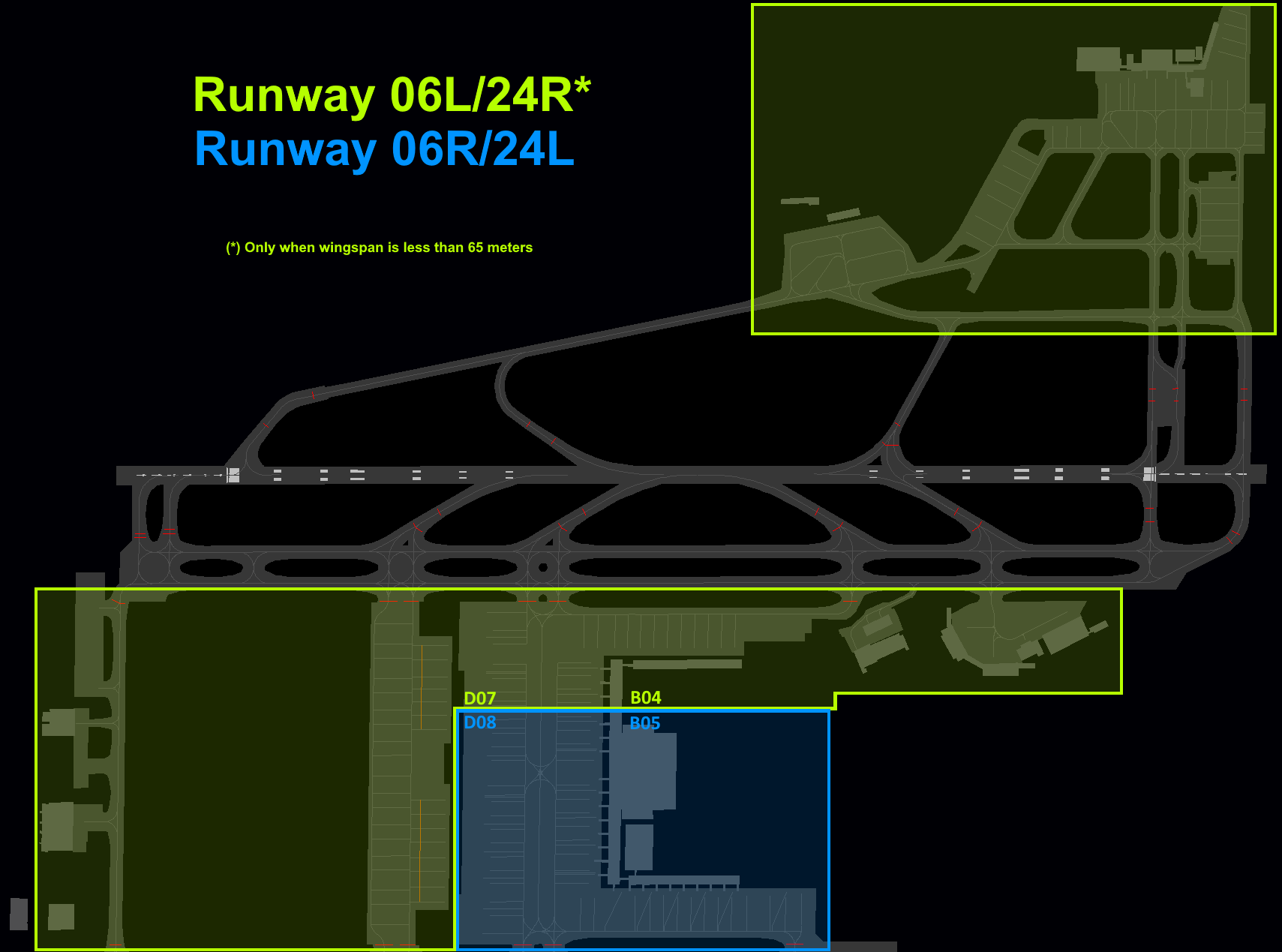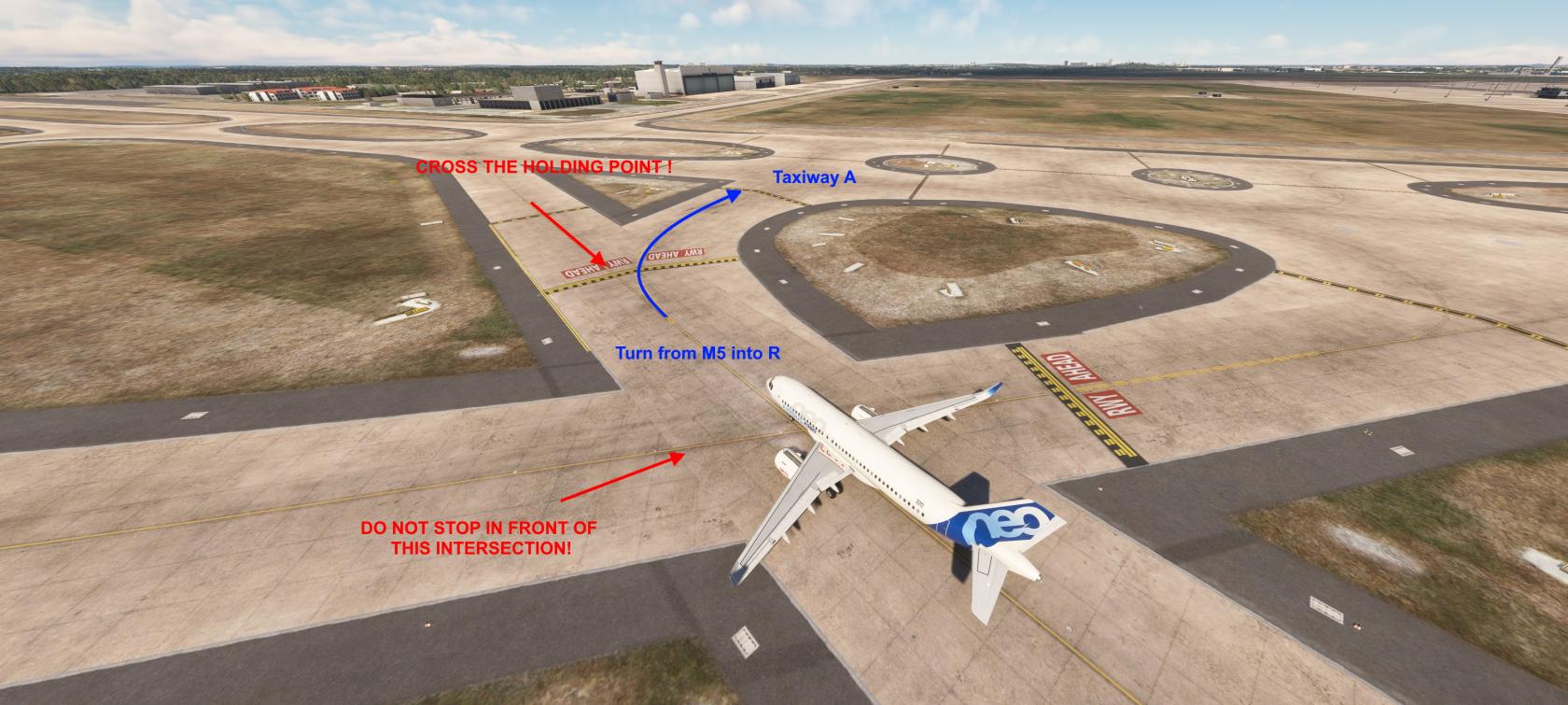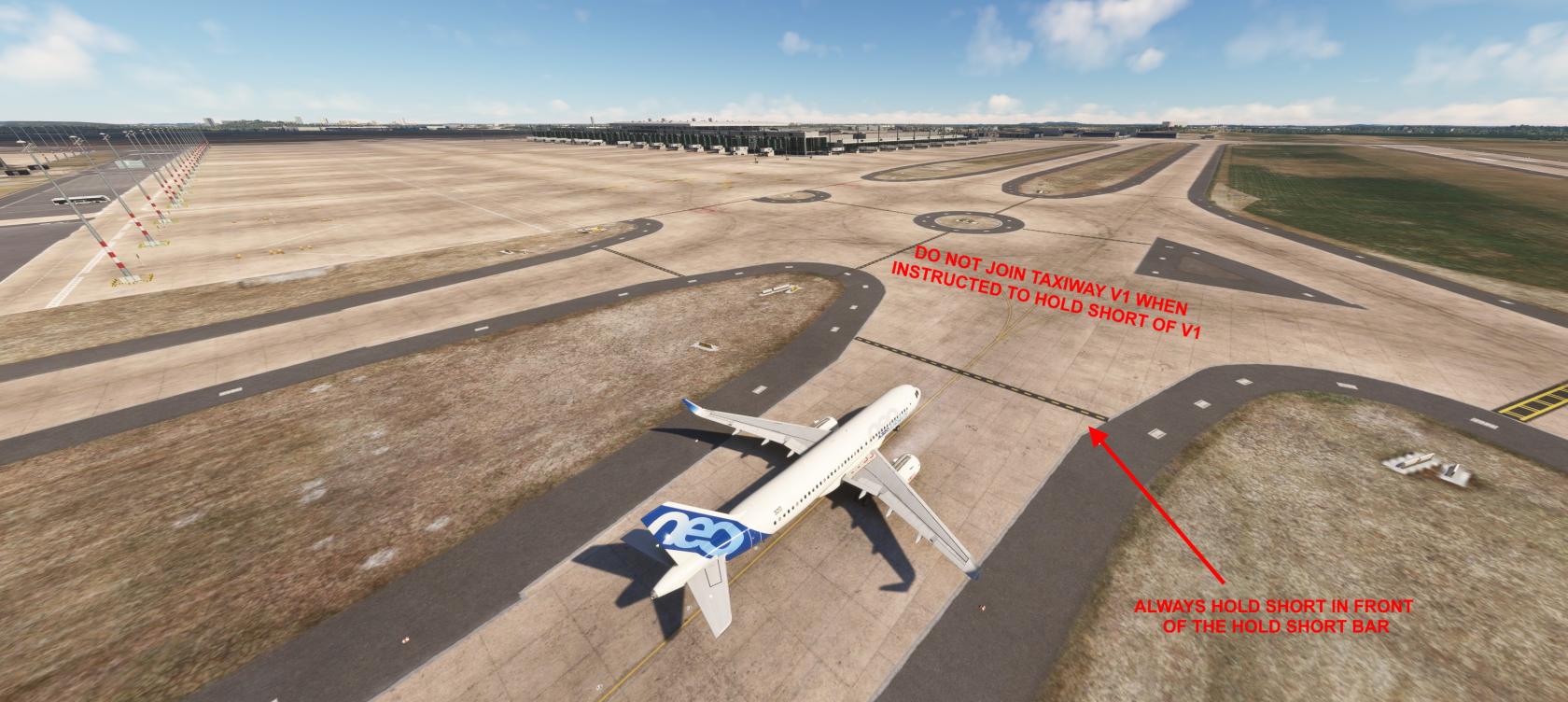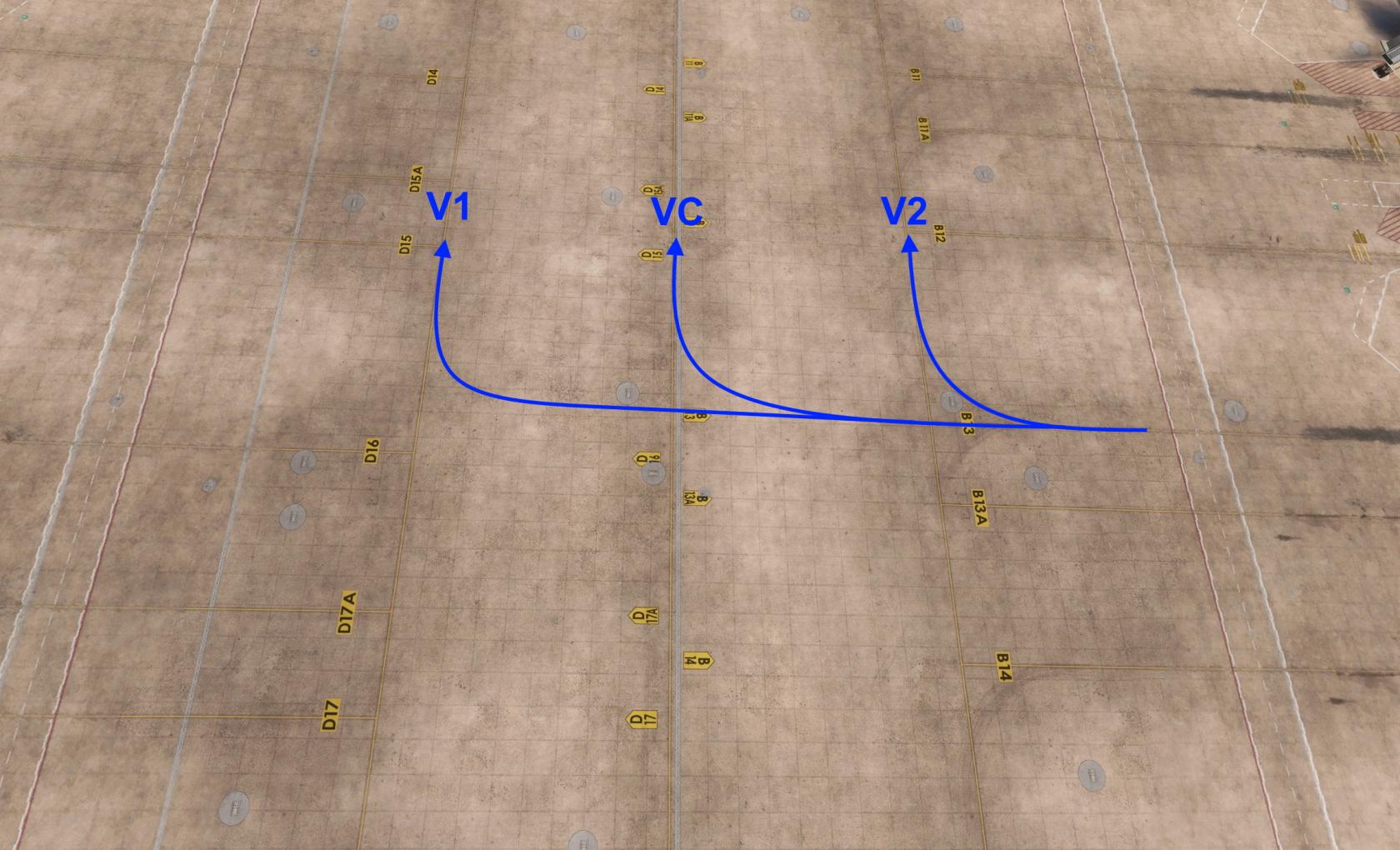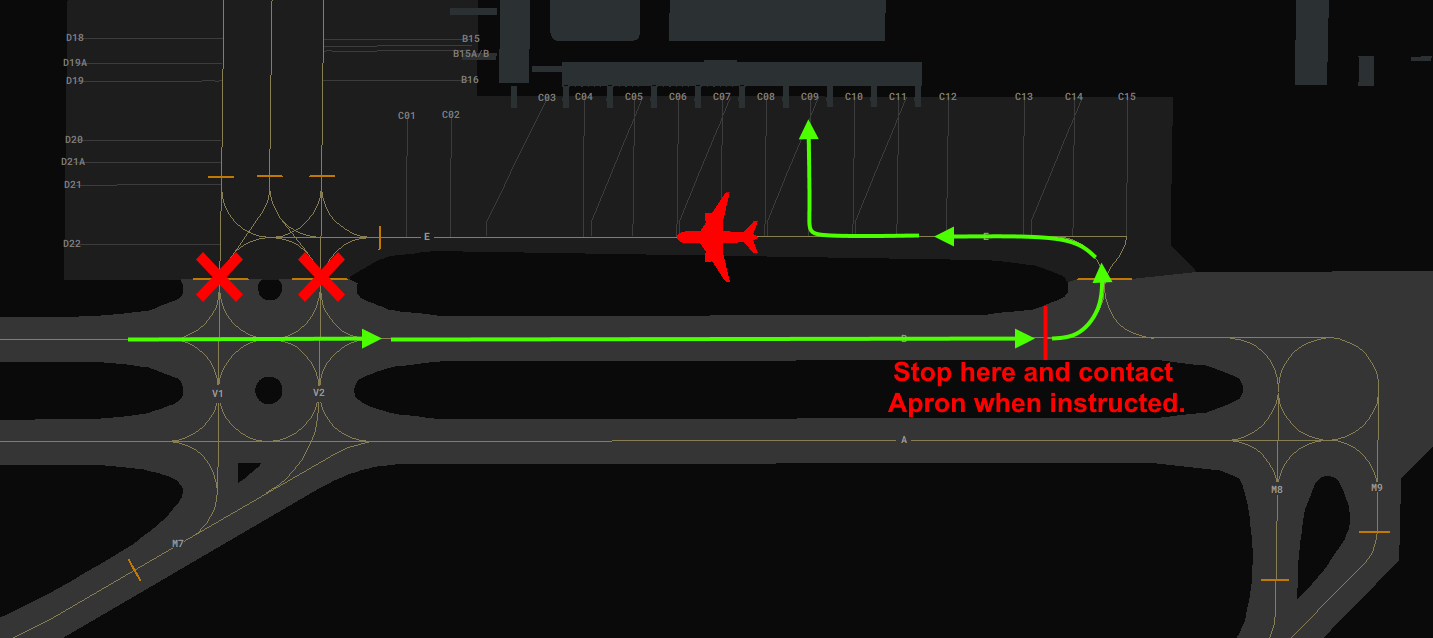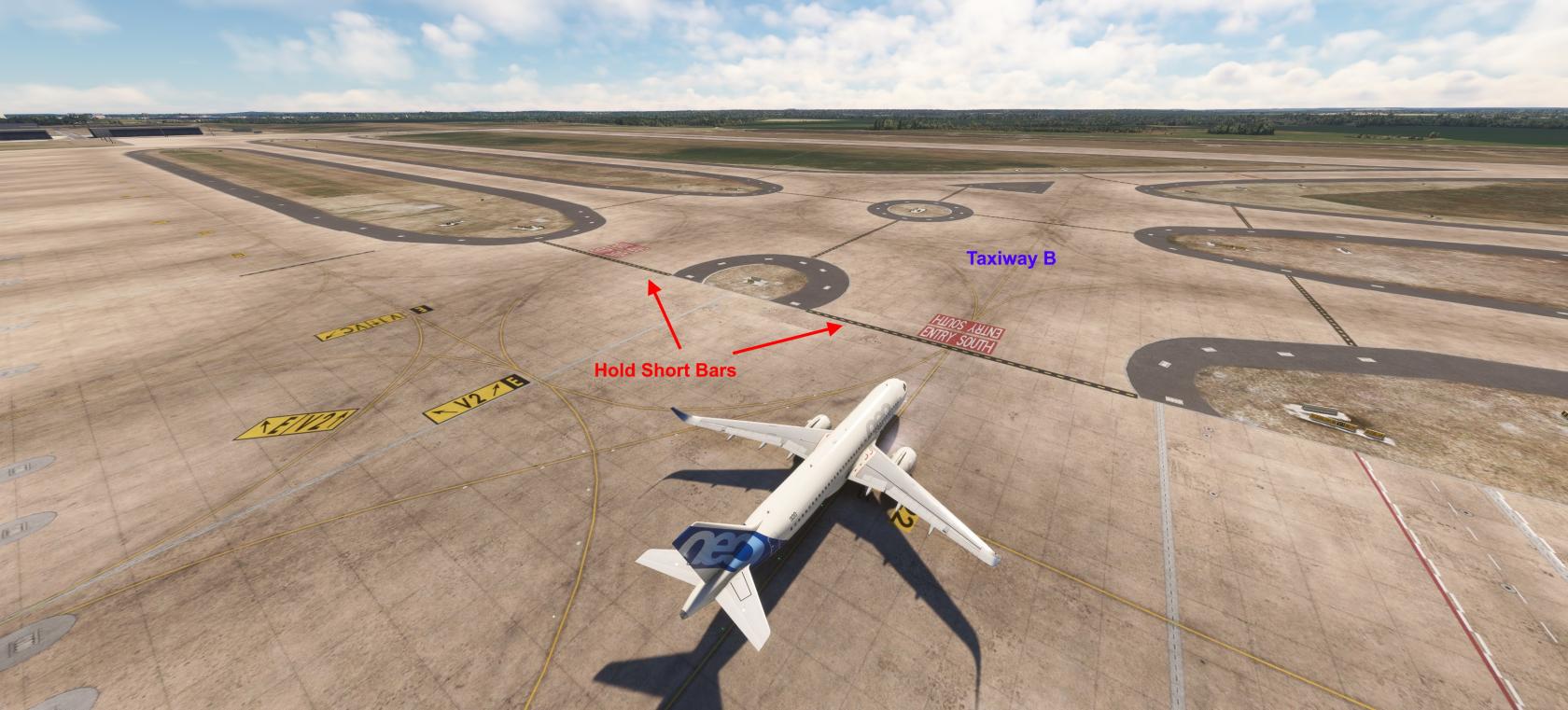Arriving Traffic
Due to the recent change of runway direction (from 07/25 to 06/24) please ensure that your scenery and nav data are up-to-date. Aerosoft users need to update the scenery via the Aerosoft One software!
IFRDescent ClearancePlanning
To help ATC, please always plan your descent according to the following descent profile restrictions (expand the appropriate section):
Arrivals via OGBER
| Route | Descent Planning | Level at OGBER | Holding at OGBER |
|---|---|---|---|
| BATEL T207 OGBER | Cross BATEL at or below FL250 |
RWY 06: at or below FL100 RWY 24. at or below FL160 |
Inbound track: 117° Left Turns |
| BKD L619 VIBIS T209 OGBER | Cross BKD at or below FL250 |
Arrivals via KETAP
| Route | Descent Planning | Level at KETAP | Holding at KETAP |
|---|---|---|---|
| RODEP T280 OGBER | Cross RODEP at or below FL230 |
RWY 06: at or below FL160 RWY 24. at or below FL110 |
Inbound track: 147° Left Turns |
| PESEL L87 KETAP | Cross PESEL at or below FL220 | ||
| BODLA Z717 RAKIT L87 KETAP | Cross BODLA at or below FL200 |
Arrivals via KLF
| Route | Descent Planning | Level at KLF | Holding at KLF |
|---|---|---|---|
| RUDAK T278 KLF | Cross RUDAK at or below FL170 |
RWY 06: at or below FL080 RWY 24. at or below FL100 |
Inbound track: 020° Right Turns |
Arrivals via ATGUP
| Route | Descent Planning | Level at ATGUP | Holding at ATGUP |
|---|---|---|---|
| ZABEL T202 ATGUP | Cross ZABEL at or below FL210 |
RWY 06: at or below FL120 RWY 24. at or below FL120 |
Inbound track: 020° Right Turns |
| OSKAN T203 ATGUP | Cross OSKAN at or below FL200 |
Arrivals via NUKRO
| Route | Descent Planning | Level at NUKRO | Holding at NUKRO |
|---|---|---|---|
| ABLOX T204 NUKRO | Cross ABLOX at or below FL220 |
RWY 06: at or below FL160 RWY 24. at or below FL110 |
Inbound track: 331° Right Turns |
| GOVEN T205 NUKRO (RWY 06) | Cross GOVEN at or below FL180 | ||
| GOVEN T205 NUKRO (RWY 24) | Cross GOVEN at or below FL120 |
DepartureExpected RunwayTrackmiles
TheIn departurecontrast to the flight plan, the following distances from the starting point of the transition to the landing may be regarded as the expected flight distance for flight and fuel planning purposes. Any deviations from this may be regarded as a delay situation.
| From IAF | Runway In Use | Average flight distance (NM) from IAF to the runway |
| OGBER |
06 | 40 |
| 24 | 67 | |
| KETAP |
06 | 69 |
| 24 | 49 | |
| KLF |
06 | 37 |
| 24 | 53 | |
| ATGUP |
06 | 60 |
| 24 | 52 | |
| NUKRO |
06 | 71 |
| 24 | 54 |
Expected Routing after IAF
Traffic will usually guided via radar vectors or the transition to the final. Please don't program the published standard approach from the IAFs. You'll need to use the Transition including all DB waypoints.
For Berlin, only the corner waypoints of the transition are referenced to the transition procedure in the FMC. Nevertheless, ATC often clears traffic to a waypoint on the downwind or final. If a waypoint is not already part of the transition loaded in the FMC, please enter the instructed waypoint manually in your flight plan.
Runway Assignment
At Berlin, the arrival runway will always be assigned by Berlin Arrival. In most cases, your arrival runway is assigned depending on theyour expected parking positions.position to reduce taxi times. Aircraft with a wingspan of 65 m andor more willshall always getexpect runway 06R/24L assigned. Keep in mind, that Delivery usually will not include your departure runway in the IFR clearance. Your assigned SID is only valid for one specific departure runway.24L.
Note that Berlin Arrival may alter from the standard runway assignment procedure if required due to traffic, weather or on request from Berlin Tower.
High Intensity Runway Operations
To increase traffic and frequency capacity, the following procedures shall be applied by the pilot arriving at Berlin-Brandenburg.
DatalinkChange Clearanceof (DCL)Frequency to Berlin Director
Berlin-BrandenburgWhile alsobeing offerstransferred electronicfrom datalinkBREMEN clearancesRADAR (DCL).to Usually,BERLIN DIRECTOR, the stationinitial codecall shall be restricted to CALLSIGN only, to avoid frequency congestion.
Runway Turn-Off Taxiways
To enable the greatest possible throughput of approaches and departures per hour, RWY occupancy times shall be reduced to a minimum. If RWY conditions permit, the following rapid exit TWYs shall be used:
| TYPE CLASS | RWY 24R | LDA | RWY 24L | LDA | RWY 06R | LDA | RWY 06L | LDA |
| HEAVY | L3 | 1960 m | M3 | 2255 m | M6 | 2045 m | L6 | 2005 m |
| MEDIUM JET | L4 | 1490 m | M5-R | 1785 m | M4 | 1575 m | L5 | 1555 m |
If it is EDDB.already Ifclear yourto aircraftthe doespilot noton haveapproach athat directthe integrationabove TWYs cannot be used, he shall inform aerodrome control of the Hoppie system, you can also use the standalone easyCPDLC client.
Requesting clearance electronically is preferred over voice clearances as it reduces frequency congestion thus avoiding delays. Because of this, we ask all pilots able to use the Hoppie ACARS system to do so.
SIDs from Runway 06R (Q-SID)
In most cases, traffic departing from runway 06R will get assigned a SID with a Q designator. Please brief this departure route in detail, as it will generate quite some workload for the pilot: this.
ThisWhen Qlanding departureon routesrunway require06R, aplease strongonly rightuse turnturn-off taxiway M7 when approved by Berlin Tower!
Automatic Handoff to Ground
If stated in the ATIS, after leaving the RWY, the pilot shall immediately change to the frequency of ground control of his own accord and make an initial call. There will be no handoff from Tower to Ground after landing.
Please check the ATIS carefully, as soonthere asthe youautomatic crosshandoff 600procedure feet.will Pleasebe do not turn earlier or later.described.
YourIf FMSthe mightautomatic handoff procedure to Berlin Ground is active the ATIS will display:
AFTER VACATING RUNWAY 06L CONTACT GROUND ON FREQUENCY 129.505. AFTER VACATING RUNWAY 06R CONTACT GROUND ON FREQUENCY 121.705.
AFTER VACATING RUNWAY 24R CONTACT GROUND ON FREQUENCY 129.505. AFTER VACATING RUNWAY 24L CONTACT GROUND ON FREQUENCY 121.705.
If the automatic handoff procedure to Berlin Ground is not beactive ablethe ATIS will display:
AFTER VACATING RUNWAY 06L OR 06R REMAIN ON FREQUENCY.
AFTER VACATING RUNWAY 24R OR 24L REMAIN ON FREQUENCY.
Taxi Operations
Vacating the Runway
Unless he has received a further taxi clearance, the pilot shall hold in front of TWY D when taxiing off the northern RWY to displaythe south, and hold in front of TWY A when taxiing off the southern RWY RWY (if leaving via TWY M5 TWY R may also be used to hold in front of TWY A).
When vacating via M4 (RWY 06R) or M5 (RWY 24L) always continue your taxi until you have crossed the holding point. NEVER STOP IN FRONT OF THE INTERESTING TAXIWAY.
Hold Short
Berlin Ground will usually instruct to hold short of taxiway V1 for traffic taxiing from runway 06R/24L. Traffic from runway 06L/24R may be instructed to hold short of taxiway V3 or V4.
Holding short of a taxiway means stopping in front of this proceduretaxiway. correctly.Never Thereforejoin wetaxiway recommendV1, flyingV2, V3 or V4 without the initialexplicit rightinstruction turnfrom manually.Berlin Ground or Berlin Apron.
Mit freundlicher Genehmigung der DFS Deutsche Flugsicherung GmbH. Nicht für navigatorische Zwecke geeignet.
Startup Approval
A startup approval is the controller's assurance that you will be cleared to start moving within the next few minutes.Do not start your engines at the gate, unless you have a taxi-out position. Even with startup approval, the engines are started during pushback.
Pushback will not be issued by Delivery. Startup approval is not a clearance for pushback! Hold position and request pushback separately on the
Alternative Apron frequency, once you have been handed over to this frequency.
Apron Procedures
At Berlin, all manoeuvres on the apron movement areas are subject to ATC clearance by Berlin Apron (except Apron 1, 4 and W1-W5).
Pushback ProceduresEntry
Berlin Apron will instruct the type of pushback which shall be used. This can be either a pushback with a turn to a certain direction or a pushback straight back.
For traffic parking inon Apron BC, Berlin Ground may instruct an alternative procedure to join the apron manoeuvering area, in case traffic is blocking taxiway E. If instructed this procedure, do not join the apron via V1 or D,V2. Please only use this procedure when instructed by ATC!
Berlin Ground will usually use an instruction like the following:
"EJU32CM, taxi via B to the end, hold short of E.
Before reaching Taxiway E, where you'll then need to stop on Taxiway B, in front of the intersection, Berlin ApronGround oftenwill instructsusually traffic to push back onto taxi lines V1, V2 or VC. Please make sure that your pushback tool can performinstruct the pushbackpilot onto the correct taxi line. If not or you are unsure if you can pushback correctly, pleaseto contact Berlin ApronApron. immediatelyOnly andenter explaintaxiway theE situation.when instructed by Berlin Apron.
Taxi Procedures
Swing-Over
ATC will often issue "Swing-Over-Instructions" meaning that aircraft are supposed to directly switch taxiways from the present positions. This procedure will be applied between taxiways V1, V2 and VC.
Please don't follow any guidance lines to swing over between taxiways V1, V2 and VC. Instead, switch directly when instructed by Berlin Apron.
Note: This procedure will not be applied when Low Visibility Conditions exist.
Virtual Barrier
Due to an airport street crossing the apron, only VC can be used as a connection between taxiways V1-V3 and V2-V4. There is no direct connection between those taxiways!
ATC often issues so-called "swing over instructions" to clear aircraft onto VC. Please switch from taxiway V1 or V2 to VC immediately when instructed. There is no guidance line to switch between V1, V2 and VC. Aircraft shall self-manoeuvre on the apron.
Hold Shorts
Berlin Apron will usually instruct to hold short of taxiway B or taxiway C when leaving the Apron. Alternatively, the phrase "Hold Short of Entry North/South" may also be used, marking the end of the Apron.
Holding short of a taxiway/entry means stopping in front of this taxiway/entry. Never join taxiway B or C without the explicit instruction from Berlin Ground/Tower ("taxi via B/C").
High Intensity Runway Operations (HIRO)
Pilots shall ensure that they carry out these instructions without delay after receiving clearance up to the point of departure or take-off clearance in order to keep the RWY occupancy times to an absolute minimum. Cockpit checks should be concluded prior to taxiing onto the RWYs. Checks which still have to be carried out on the RWY shall be kept to a minimum.
Directions from aerodrome control to be ready for immediate take-off ("be ready for/expect immediate departure") will be issued if immediate compliance with the ensuing take-off clearance is ensured with as little RWY occupancy time as possible. Pilots unable to comply with this shall inform aerodrome control without delay.
Intersection Departures
Pilots shall be prepared for the following take-off runs available (TORA). If they require longer take-off runs or accept shorter ones, they shall communicate this when in contact with Berlin Ground.
Independent Parallel Departures
Simultaneous parallel departures in progress. Proceed exactly on the extended centerline until starting turns as published and remain on TWR frequency until further advised.
Any Deviation from the departure route will cause a conflict immediately. If required, Berlin Tower will issue heading instructions to establish separation again.

